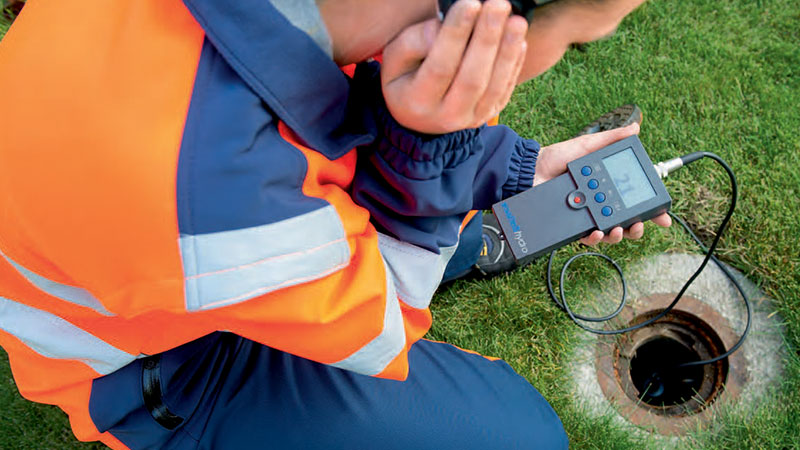Innovative Solutions for Very Early Detection of Water Leakages in Buildings and Framework
As the honesty of buildings and framework is critical, the obstacle of early discovery of water leaks has actually stimulated ingenious solutions that guarantee to revolutionize the method we safeguard versus possible damages. From innovative leakage detection modern technologies to the deployment of IoT sensing units for real-time monitoring, the landscape of leakage prevention is advancing swiftly. Artificial intelligence algorithms use a look right into the future of leak prediction, while thermal imaging provides a non-intrusive approach for pinpointing hidden leaks. Automated water circulation analysis systems are reshaping just how leaks are identified and resolved, leading the way for an aggressive technique to water leak detection. Each of these solutions holds the crucial to making sure the reliability and durability of our constructed environment, prompting a change in the direction of a more sustainable and effective future.
Advanced Leak Detection Technologies
Advanced leak discovery innovations, geared up with advanced sensing units and algorithms, play an essential duty in promptly determining and pinpointing water leakages in different setups. Electro-magnetic sensors can recognize changes in electro-magnetic areas caused by water, offering yet another layer of leak detection capacity.

IoT Sensors for Real-Time Tracking
In the world of contemporary water leakage discovery, the combination of IoT sensing units for real-time surveillance stands for a critical improvement in enhancing proactive leak discovery capacities. These sensing units offer continuous tracking of water supply, supplying real-time information on water circulation prices, pressure variations, and temperature level changes. By leveraging IoT innovation, these sensing units can identify also the tiniest abnormalities in water use patterns, making it possible for very early recognition of possible leakages prior to they rise right into significant concerns.
IoT sensing units send information to a central platform, where sophisticated algorithms evaluate the information and generate alerts or notifications when abnormalities are found. This real-time surveillance ability enables property proprietors or center managers to quickly resolve leakages, lessening water damages, minimizing repair work costs, and conserving water resources.
In addition, IoT sensing units can be integrated with building monitoring systems, permitting for computerized actions to discovered leaks, such as shutting down water valves or triggering pumps to minimize the influence of leaks. Overall, the implementation of IoT sensing units for real-time tracking considerably boosts the effectiveness and effectiveness of water leakage detection in structures and facilities.
Machine Learning Algorithms for Leakage Prediction

One trick benefit of utilizing device knowing for leak forecast is its capability to continuously find out and enhance its accuracy with time. As even more data is accumulated and fed into the algorithm, it can improve its predictions and adjust to altering conditions, inevitably enhancing the reliability of leakage detection systems.
In addition, artificial intelligence algorithms can assist in identifying refined indications of leakages that may go unnoticed by typical tracking approaches. water leak detection. By examining complex information embed in real-time, these formulas can provide very early warnings and informs, enabling prompt intervention and preventative maintenance to minimize potential water damages and associated expenses
Making Use Of Thermal Imaging for Leak Discovery
Thermal imaging technology uses a promising technique for finding water leaks in different systems and frameworks. look at here By utilizing infrared radiation and temperature level variances, thermal imaging electronic cameras can identify concealed leakages that are not easily noticeable to the naked eye. When water gets away from pipes or structures, it usually changes the temperature of the bordering area, developing temperature differentials that thermal electronic cameras can capture. These temperature level abnormalities are then translated into noticeable photos, highlighting the specific place of the leakage.
One of the crucial advantages of thermal imaging for leakage detection is its non-intrusive nature. Overall, the usage of thermal imaging innovation enhances the performance and precision of water leak discovery, making it an important device for preserving the integrity of structures and infrastructures.
Automated Water Circulation Analysis Equipments
Exactly how can automated water circulation analysis systems reinvent anonymous the detection and monitoring of leaks in numerous systems and infrastructures? Automated water circulation analysis systems use a proactive strategy to leak discovery by continuously monitoring water circulation prices and patterns. By establishing standard data, these systems can swiftly identify variances that may suggest a leakage, enabling timely treatment to avoid comprehensive damages.
These systems make use of advanced formulas to assess real-time data and supply immediate notifies when abnormalities are spotted, permitting swift action to be taken. In addition, automated water flow evaluation systems can be incorporated with building administration systems or IoT platforms, improving total efficiency and allowing remote tracking capacities.
Moreover, the information collected by these systems can be used for anticipating upkeep objectives, aiding to recognize possible weak factors in the framework prior to leakages happen. In general, the application of automated water flow analysis systems can significantly improve leakage discovery and see this site administration methods, ultimately leading to cost financial savings, lowered water waste, and enhanced sustainability in buildings and infrastructure.

Conclusion
To conclude, the assimilation of innovative leakage discovery technologies, IoT sensors, device knowing algorithms, thermal imaging, and automatic water circulation analysis systems uses cutting-edge services for early detection of water leaks in buildings and facilities. These technologies allow real-time surveillance, prediction of leakages, and effective detection techniques to avoid water damages and wastefulness. Carrying out these services can aid in keeping the integrity and sustainability of water supply in various settings.